| Join | Official Historian | City of Stamford | Blog | About Us | |
| Jewish Historical Society | Civil War Roundtable | Contact Us | |
|
|
|
|
Lectures and Presentations
Layer by Layer How Women Dressed in the 1860spresented
November 2, 2003 at the annual Victorian Tea
|
||||||||||||||||||||||||||||
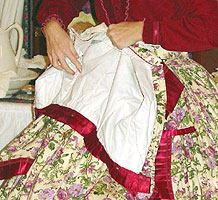 |
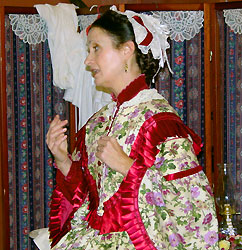 |
| A hidden system of metal
stays plus numerous hooks and eyes hold
the tea bodice in place.
Many times, ornamental buttons were just for looks. |
|
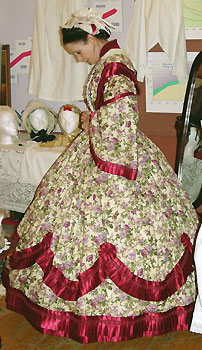 |
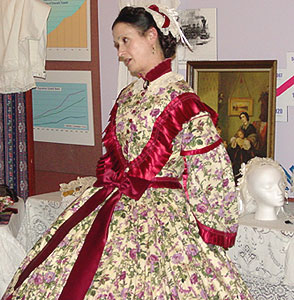 |
| The dress bodice is hooked to the skirt's waist band to make it appear to be one piece. | The large bow
sash was worn in front instead of the back. |
Bonnets and gloves
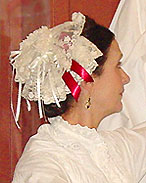 |
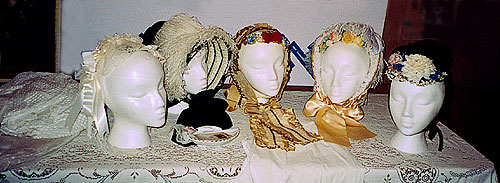 |
|||
| A lace day cap was proper
indoor head gear worn by married women and stayed on for the entire day. |
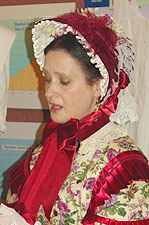 |
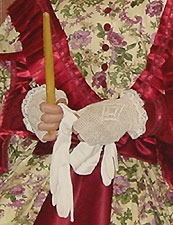 |
||
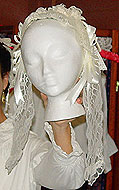 |
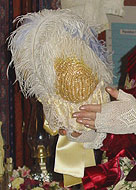 |
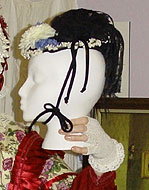 |
||
| A lace breakfast cap with long lace sides called lappets. | The back view of a lace neck curtain called a bavolet, which covered the nape of the neck on a straw bonnet. | A small new fashion bonnet of the 1870s called a fancheon. | A proper full bonnet with lace and flowers inside the brim, and ostrich feathers on the outside, styled as of the 1860s. | Gloves were stretched first, using glove stretchers, and were worn on top of lace mitts when leaving home. |

 Ready
to go to the tea
Ready
to go to the tea
Jane Sabatelli
Civil War Exhibit 2003
Photos © Nancy Louth